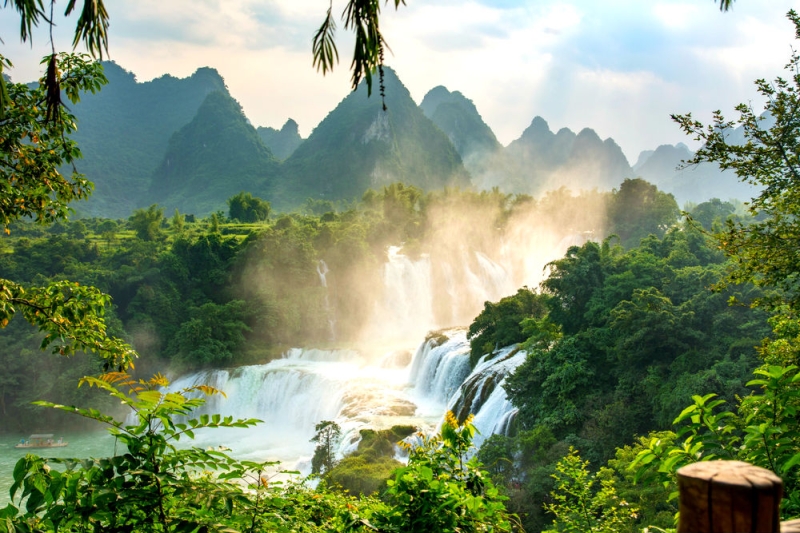
Interestingly, the word for “landscape” in Chinese is “山水” (“shan shui”). In Russian, the first hieroglyph is translated as “mountain”, and the second as “water”. And what do these two words give us in total? That’s right, waterfalls. There are many waterfalls in China. We will get acquainted with the most beautiful of them in this article.
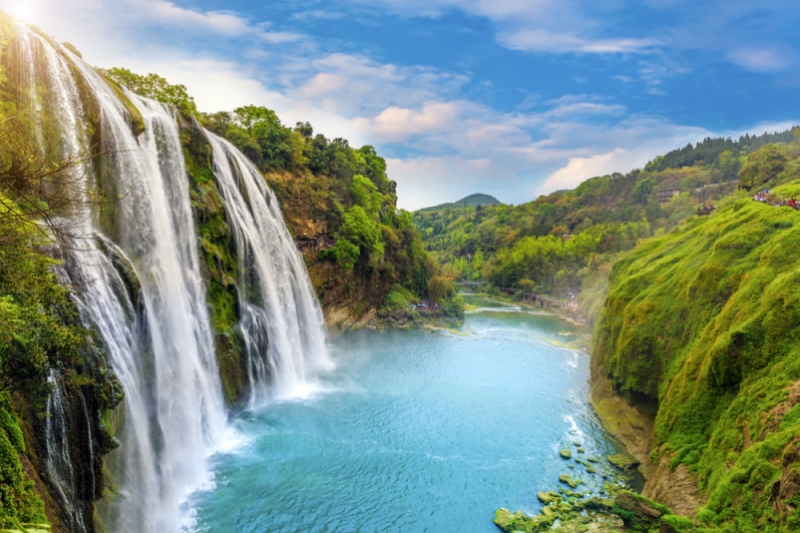
1. Huangguoshu Waterfall
Location
Chinese name: 贵州黄果树瀑布
Best time to visit: summer and autumn
Entrance: until 15:30 – 180 yuan (1,470 rubles); after 15:30 – 270 yuan (2,200 rubles).
Huangoshu Waterfall is the largest in China. And together with twenty neighboring ones, it forms the largest group of waterfalls on the planet, listed in the Guinness Book of Records. Huangoshu Falls is located on the territory of the national park of the same name, which is known for its untouched relict forests and endemic plants.
The city closest to the waterfall is Guiyang, the capital of Guizhou province. There are regular direct buses from the city. Travel time to the Huangoshu Falls tourist area is two to three hours.
The best time to visit is during the rainy season, that is, summer and autumn. We recommend coming to the park early in the morning, before it is filled with tourists, in order to experience the greatness of this place in a calm atmosphere.
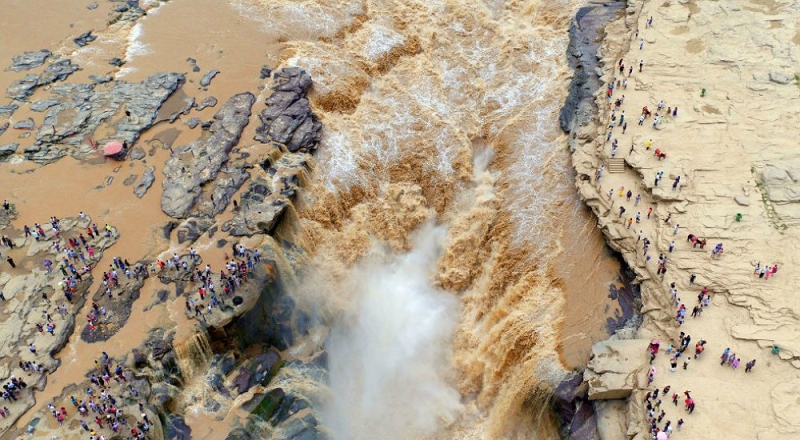
Photo: @CCTVNEWS
2. Hukou Falls
Location
Name in Chinese: 壶口瀑布
Best time to visit: summer
Entrance: 100 yuan (815 rubles)
Hukou Falls on the Yellow River is the second largest waterfall in China. It is located on the border of two provinces: Shanxi and Shaanxi. The name of the waterfall is translated from Chinese as “Teapot Neck”.
The easiest way to get to the waterfall is from the city of Xi’an. A one-way journey by car or bus will take from one and a half to three hours.
It is best to plan your trip in July, immediately after the rainy season. At this time of year, the water level in the Yellow River is especially high due to the melting snows of Tibet. Watching how streams of water change their color from yellow to gray, and from gray to blue as they fall, is an incomparable spectacle in its beauty.
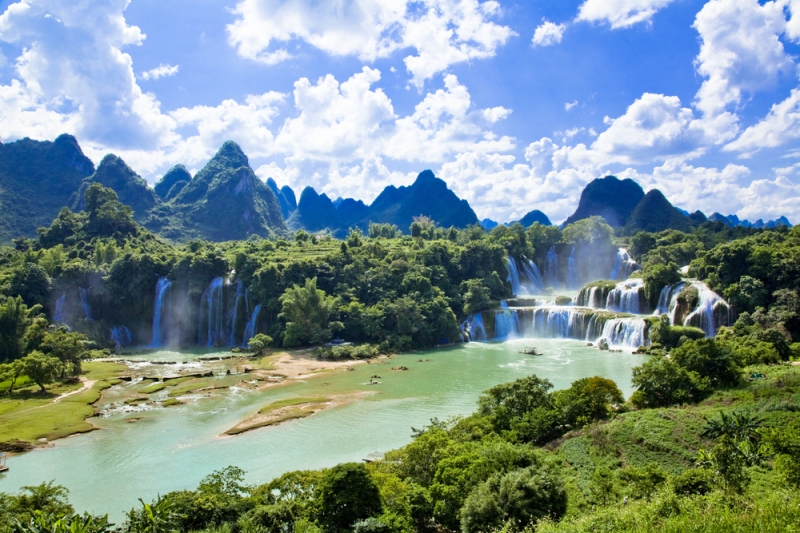
3. Detian Waterfall
Location
Chinese name: 德天瀑布
Best time to visit: mid-summer
Entrance: 80 yuan (650 rubles)
Detian Waterfall is located on the border of China and Vietnam. The main part of the waterfall is located in China, and on the Vietnamese side there are only a few channels. Detian is surrounded by rice fields and bizarre dome-shaped karst hills. In the lower reaches of the waterfall there is a large lake. You can swim along it on bamboo rafts.
The largest cities closest to the waterfall are Guangzhou or Shenzhen. From here you can take a train to Daxing City. From Daxin, in turn, the waterfall tourist area is only an hour away by car (or bus).
The best time to visit the waterfall is mid-summer. At this time, the flow of falling water is greatest. Detian Waterfall is not worth visiting in winter; weak currents and constant fog will spoil the impression of this miracle of nature.
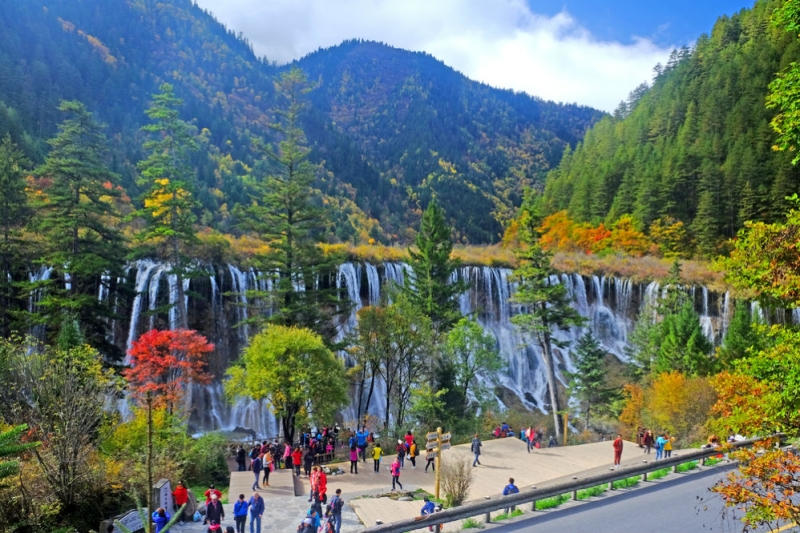
4. Waterfalls in Jiuzhaigou Park
Location
Chinese name: 九寨沟
Best time to visit: autumn
Entrance: 160 yuan (1,300 rubles)
Jiuzhaigou National Park is included in the UNESCO World Heritage List. It is difficult to find words to describe the beauty of this place with numerous colored lakes and multi-level waterfalls. The most famous of them is the Pearl Falls, which is a curtain of water 28 m high and 310 m wide.
The name Jiuzhaigou is translated from Chinese as “Valley of Nine Villages”. In a 50-kilometer valley covered with dense bamboo and coniferous forests, there are actually nine Tibetan villages, seven of which are still inhabited by people.
Due to its remoteness and isolation, Jiuzhaigou is difficult to access. The nearest major city is Chengdu. From Chengdu you can reach the place by bus or car. The journey will take 10 hours. There are sometimes rockfalls on the road, and in the rainy season there are landslides, which can add several hours to the journey. This is a budget option. A more expensive option is to fly to the high-altitude Jiuzhaigou Huanglong Airport. It is located at an altitude of 3447 meters. The journey from here to the park will take only an hour.
The best time to visit is late autumn, when the foliage of the trees takes on yellow, orange and red hues that contrast so well with the azure color of the waterfall.
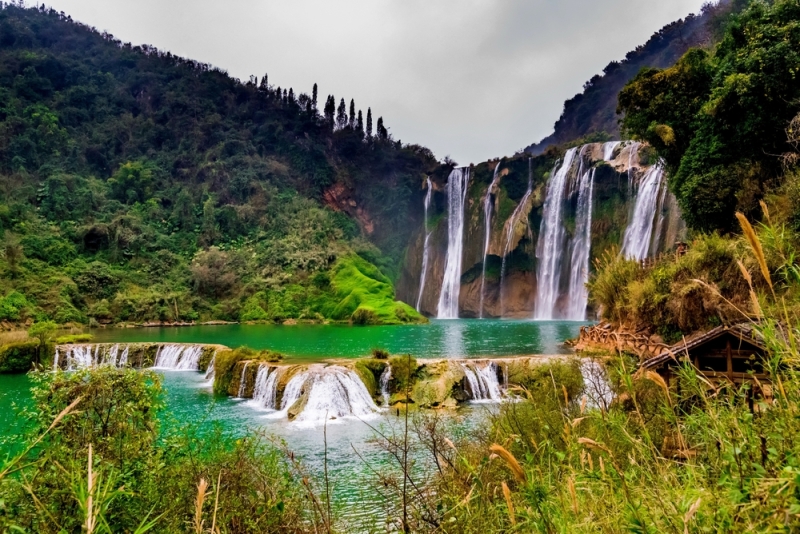
5. Jiulong Waterfall
Location
Chinese name: 九龙瀑布
Best time to visit: spring
Entrance: 95 yuan
Kowloon Waterfall is located in Yunnan Province. It is considered the widest in all of China. There is actually more than one waterfall – it is a group of cascades consisting of nine streams. It is not surprising that the name of the waterfall is translated from Chinese as “Nine Dragons”.
The city closest to the waterfall is Luoping. The easiest way to get to Luoping from Kunming is by train or bus (and you can fly into Kunming from anywhere). From Luoping you can get to the waterfall by taxi; the journey will take about half an hour.
Finally, a little advice: it’s best to plan your trip in the spring, when wildflowers begin to bloom in the meadows surrounding the waterfall – it’s very beautiful.

